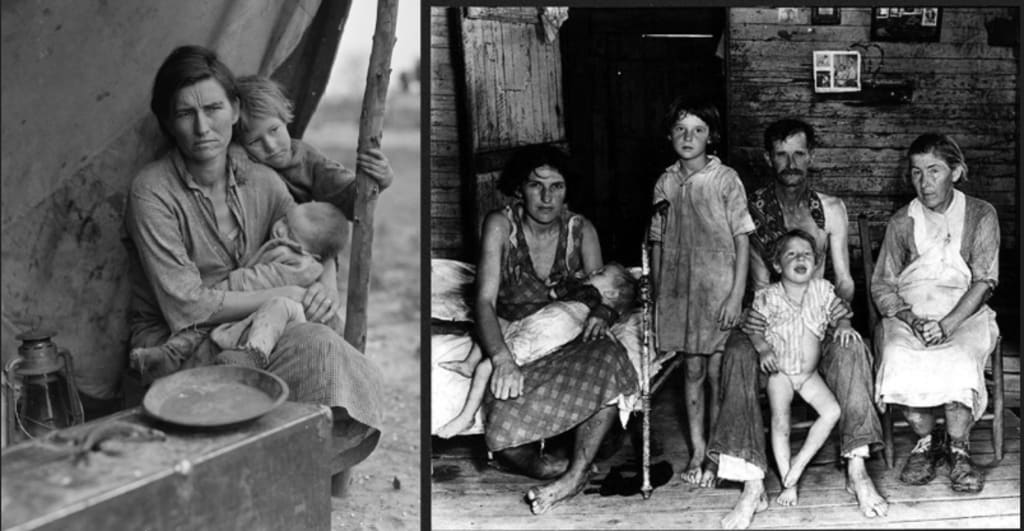Inside the Story of The Great Depression
The Great Depression- Causes and Impact

The Great Depression was one of the most catastrophic economic events in history. It began in 1929 and lasted until the late 1930s, causing widespread unemployment, homelessness, and poverty in the United States and around the world. The Great Depression was triggered by a combination of factors, including the stock market crash of 1929, bank failures, and a decline in international trade.
What Caused the Great Depression
One of the primary causes of the Great Depression was the stock market crash of 1929. The stock market had been booming in the years leading up to the crash, with many investors taking out loans to buy stocks. However, when the market began to decline in September 1929, many investors panicked and began selling their stocks. This led to a rapid decline in stock prices, causing many investors to lose their life savings.

Another cause of the Great Depression was bank failures. Many banks had invested heavily in the stock market, and when the market crashed, they lost a significant amount of money. This led to a wave of bank failures, which caused many people to lose their savings. As a result, people began to withdraw their money from banks, causing even more banks to fail.
The decline in international trade was also a significant factor in the Great Depression. After World War I, many countries imposed high tariffs on imported goods to protect their own industries. This led to a decline in international trade, which hurt many businesses that relied on exports. As a result, many businesses were forced to lay off workers, contributing to the high unemployment rate during the Great Depression.
Impact of the Great Depression on the Economy
The Great Depression had a significant impact on the economy, with unemployment rates reaching as high as 25%. Many businesses went bankrupt, and the stock market lost 90% of its value. The decline in the economy also led to a decrease in consumer spending, which had a ripple effect on other industries.

The impact of the Great Depression was felt around the world, with many countries experiencing a decline in industrial production and international trade. The decline in international trade led to a rise in protectionism, with many countries imposing tariffs on imported goods in an attempt to protect their own industries.
Impact of the Great Depression on Society
The Great Depression had a profound impact on society, with many people losing their jobs, homes, and life savings.

Many people were forced to live in shantytowns, which were often located on the outskirts of cities. These shantytowns, which were often referred to as "Hoovervilles" after President Herbert Hoover, were made up of makeshift shelters and lacked basic amenities such as running water and electricity.
The Great Depression also had a significant impact on families, with many parents struggling to provide for their children. Children were often forced to drop out of school to help support their families, and many families were separated as parents searched for work in other parts of the country.
Response to the Great Depression
The response to the Great Depression was initially slow, with President Herbert Hoover believing that the economy would recover on its own. However, as the economy continued to decline, the government began to take action. The New Deal, which was introduced by President Franklin D. Roosevelt in 1933, was a series of programs aimed at providing relief, recovery, and reform.

The New Deal included programs such as the Civilian Conservation Corps, which provided jobs to young men, and the Works Progress Administration, which provided jobs to unemployed workers. The New Deal also included the Social Security Act, which provided retirement benefits to workers, and the Fair Labor Standards Act, which established a minimum wage and maximum workweek.
Recovery from the Great Depression
The recovery from the Great Depression was slow, but the economy eventually began to improve in the late 1930s. The United States entered World War II in 1941, which led to an increase in industrial production and a decrease in unemployment. The war also led to increased government spending, which helped to stimulate the economy.
Lessons Learned from the Great Depression
The Great Depression taught us many lessons, including the importance of government intervention during economic crises. The New Deal programs provided much-needed relief to millions of Americans, and the Social Security Act and Fair Labor Standards Act helped to establish important protections for workers.

The Great Depression also taught us the importance of regulating the financial industry. The stock market crash of 1929 was caused in part by speculative investments and lack of oversight, which led to a wave of bank failures and a decline in the economy. The government responded by introducing regulations such as the Glass-Steagall Act, which separated commercial and investment banking.
About the Creator
Rare Stories
Our goal is to give you stories that will have you hooked.
This is an extension of the Quora space: Rare Stories
X(formerly Twitter): Scarce Stories
Official Bookstore: davidkellertruecrime
Writers:
....xoxo






Comments
There are no comments for this story
Be the first to respond and start the conversation.